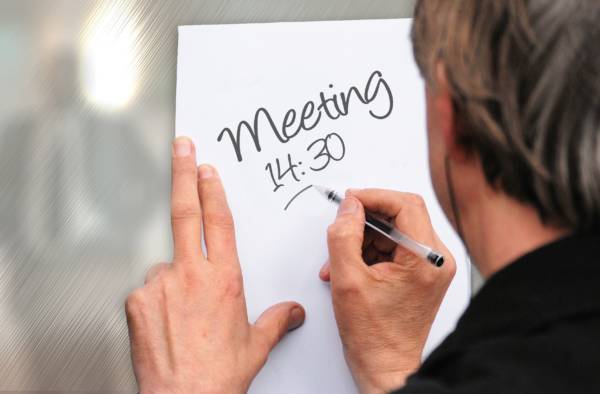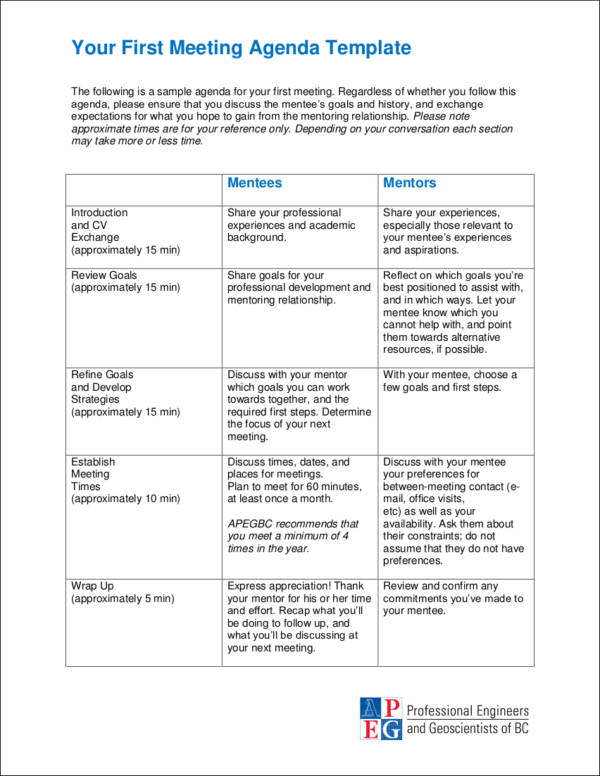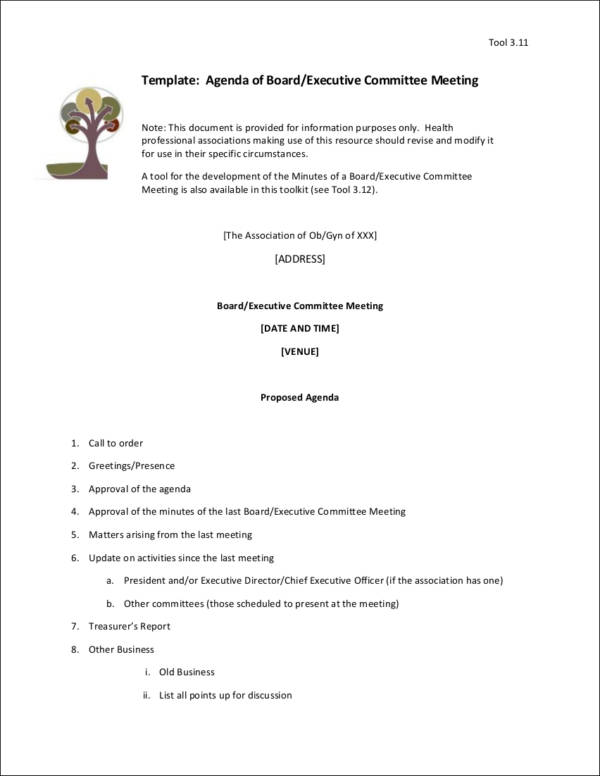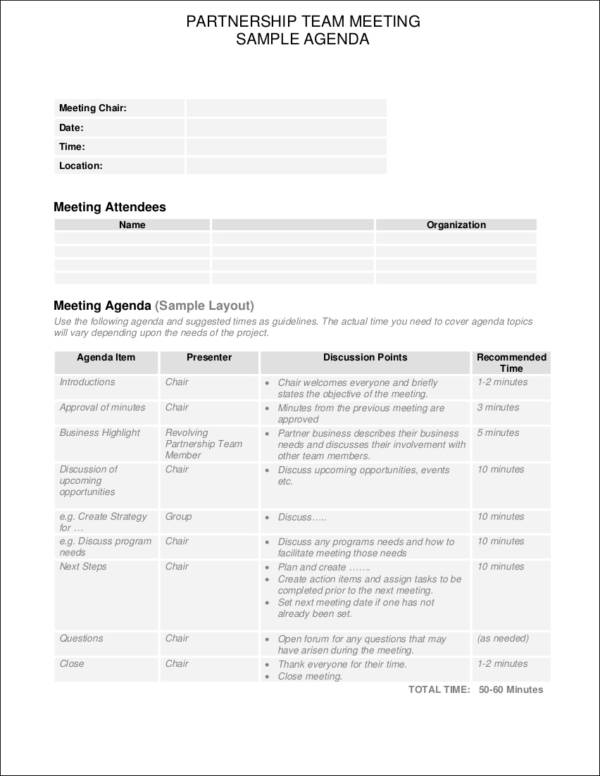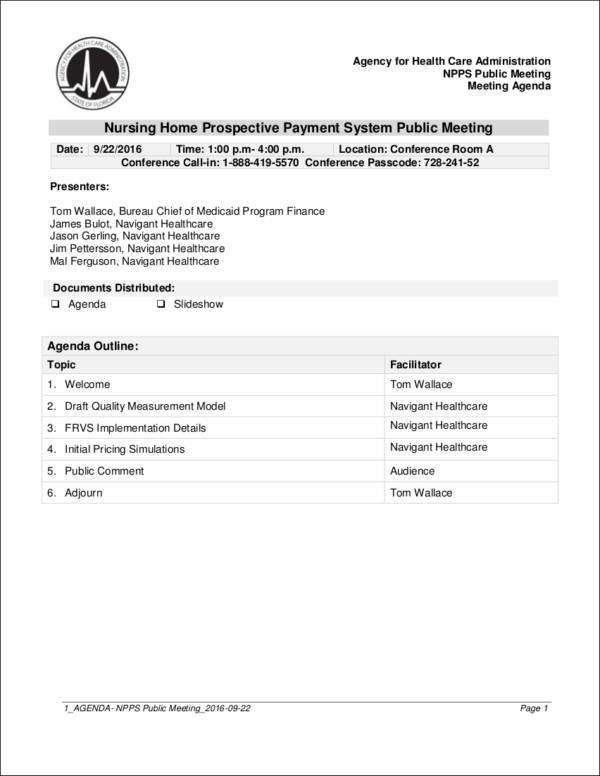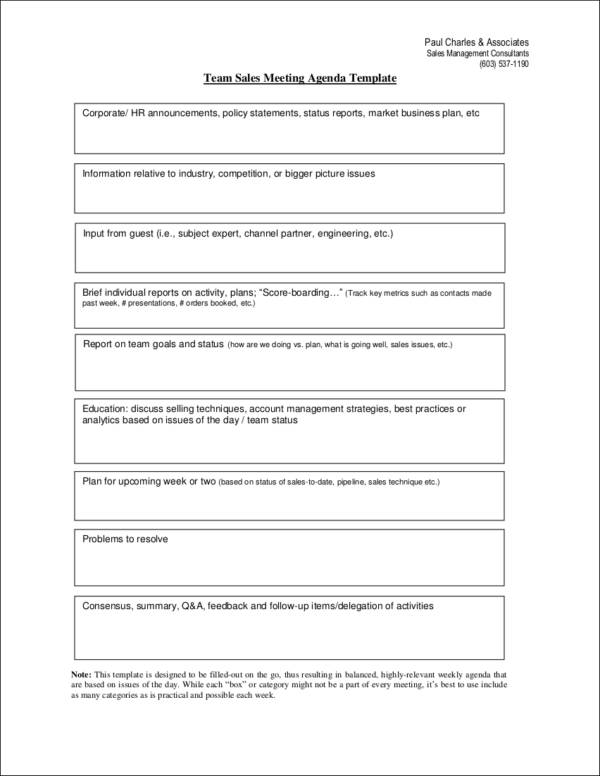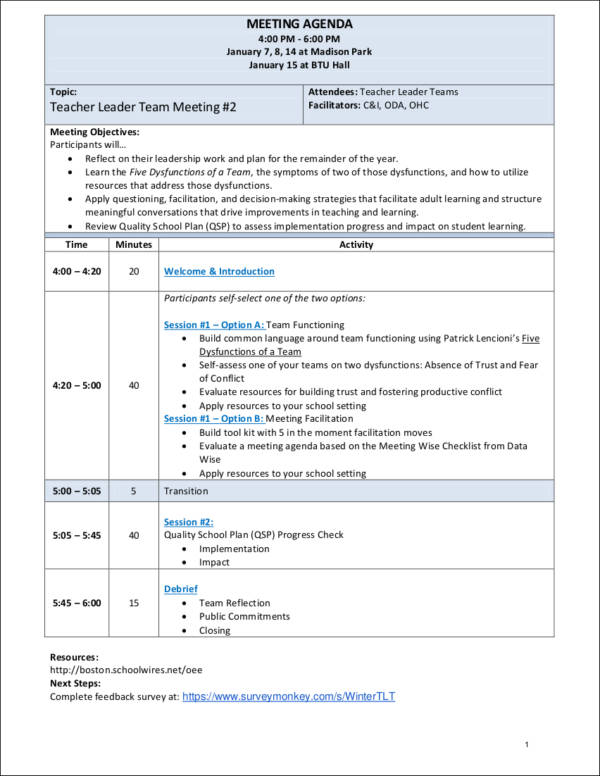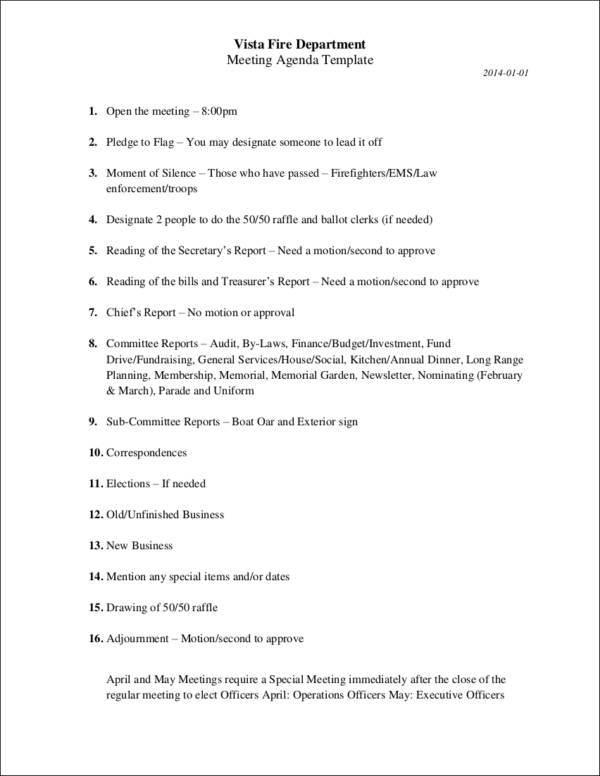Have you ever been in an unproductive meeting where all the necessary and essential points and topics aren’t clearly discussed? If the answer is yes, then you have come to the right article. In order to have an effective company or business meeting, making use of a meeting agenda is essential. So what exactly is an agenda? An agenda is a document that lists the various tasks and topics that need to be done. This is important in every meeting since this will help individuals outline the topics that are needed to be covered during the meeting. Through a meeting agenda, you will be able to plan effectively and prepare for the materials for discussion and other elements needed for every meeting.
Meetings are essential in every business since this is where important points are discussed. A successful meeting will benefit both the business and their employees. Through meetings, this will assure the growth and progress of the business. Also, meetings are useful in discussing different business plans, marketing plans, and other undertakings to further improve the business, organization, or entity. If you need to create a meeting agenda, you can read more information about the steps, essential tips, and the dos and don’ts of creating meeting agendas. We also have meeting agenda templates and business agenda templates that are available for download in this article and on this site. You can use the samples as a reference and the templates for creating your meeting agenda.
Sample Meeting Agenda Template
First Meeting Agenda Template
Meeting Agenda Example Template
What Is a Meeting Agenda?
Meetings are constantly conducted by businesses, organizations, and other entities to discuss the various undertakings in the company. So how do you effectively conduct a meeting? The most important document that you will need to have is a meeting agenda. A meeting agenda is a tool that is used to plan what needs to be done during the meeting. It contains an outline of the activities and tasks that will be taken up, including the members of the meeting that needs to be present. Usually, a meeting agenda is sent to the different departments and individuals in the company to inform them of the items that will be discussed during the meeting. Without a well-crafted meeting agenda, you will not be able to achieve the goals and objectives in every meeting that you will have.
Why Use a Meeting Agenda?
Why is it important and useful to have a meeting agenda? Meeting agendas are effective documents in helping individuals conduct successful and organized meetings. An unproductive meeting is usually the result of the lack of planning and preparation. The uses of a meeting agenda are as follows:
- A meeting agenda will help you assign individuals who will be discussing during the meeting beforehand. This will help you save time and money since everything is accurately planned out. This will also assure the participation and productivity of everyone involved in the meeting.
- Through a meeting agenda, businesses and individuals will be able to set the goals that they need to accomplish.
- Using a meeting agenda, participants will be to prepare and understand what is expected of them during the meeting.
- A meeting agenda can also be used as a reference for the next company meeting that you will be having. You will also be able to discuss what was previously tackled during the past meetings and improve on certain aspects that need to be focused on.
- A meeting agenda is useful to ensure that everyone included in the meeting is present.
- The purpose of creating an agenda is not only to prepare individuals before and during the meeting but is also important in helping individuals understand what actions to take after the meeting. This ensures that the different tasks are achieved before the next meeting will be conducted or the next aspect of a particular project will start.
- A meeting agenda is important since it keeps you on track during the meeting, avoiding any off-topic discussions that will only delay the meeting.
Executive Committee Agenda Sample
Career Mentoring Program Agenda Sample
Partnership Team Meeting Sample Agenda
Health Care Meeting Agenda Sample
How to Develop an Effective Meeting Agenda
Understanding the step-by-step process in developing a meeting agenda is important, especially if you need to create one for a meeting that you will be conducting. Here are the steps on how to effectively create and develop your meeting agenda.
- Before you start creating your meeting agenda, having an outline or a format where you can write your agenda is important. You can create one from scratch or you can download the meeting agenda templates that are available in this article. You can choose from the various agendas that we have to ensure that you will have a well-made outline for your document.
- Now that you have a template, start by providing a title in your document. Write the type of agenda that you are creating or the topic that your agenda will be covering.
- Write the date when the meeting is scheduled, including the time it will start.
- Specify the location of the meeting by writing the address, conference room number, etc.
- Indicate the individuals or job positions that need to attend the meeting. You should also include the guests, speakers, and other relevant individuals that will be present in the meeting.
- Write in detail the objectives and goals of the meeting. It is important to specify the purpose of the meeting to help attendees understand what the meeting will be all about and also what they need to do to prepare for it.
- Write an outline of the tasks, topics, and other elements that will be discussed. Write this in chronological order from the first topic that will be discussed until the end of the meeting.
- Create a schedule by allocating the time for each task or topic that will be covered in the meeting. This is necessary to ensure that your meeting finishes on time since it prevents you from going off topic.
Additionally, you can also add extra time at the end of the meeting. This is the time where questions and clarifications can be done as well as a short discussion about future meetings. If you need more samples and templates, we have travel agendas, strategic agendas, and business agendas available should you need to create one specifically.
Dos and Don’ts of Meeting Agendas
Now that we have discussed the definition, uses, and the steps to develop a meeting agenda, let’s go over the dos and don’ts of a meeting agenda. The dos and don’ts are as follows:
- Do present the program that will be followed during the meeting.
- Do provide information on what the meeting is all about.
- Do set the time frame that should be followed in the meeting preparation and execution.
- Do provide a list of the people who are expected to attend the meeting.
- Do limit the scope of the meeting agenda to assure that the important items for discussion will be covered.
- Don’t create a meeting agenda that only includes future call to actions. Make sure to refer to previous meeting agenda to assure all items that are needed to be worked on are already done.
- Don’t curate a meeting agenda right away. It will be best if you will have a draft first so you can ensure yourself that you have already covered all the items that are needed for the meeting.
- Don’t base your meeting agenda on the needs of the attendees. It will be best if you are guided by the objective of the management for more alignment of discussion with the operations.
Team Sales Meeting Agenda Template
Teacher Meeting Agenda Template
Fire Department Meeting Agenda Template
Essential Tips for Creating an Agenda
Every meeting needs an agenda template in order to effectively communicate with the individuals and members within the company. To help you in creating one, we have collected a number of tips that will help you write a useful and well-crafted document. The tips are as follows:
- When creating an agenda, remember to include input and suggestions from your team members. This will help you gather information and data that will be useful when you start writing one.
- Always remember to send out your meeting agendas at least 24 hours before your meeting will start. This will help your team members prepare the materials, do research, etc., before the meeting.
- Clearly write the names of the individuals that are attending the business meeting.
- Specify in your agenda the members that are assigned to discuss topics during the meeting or the roles of each member present in the meeting.
- Proofread your agendas before sending them out to the different members and departments in the company.
- Keep your agenda short and simple to ensure that everyone will easily understand the information written in it.
- Provide reference materials with your meeting agendas when you send them out to allow people to have useful documents.
- Clearly indicate the steps that need to be taken before, during, and after the meeting.
How Do You Conduct an Effective Meeting?
An effective meeting can only be done when there is appropriate planning that contains the information that should be tackled by the people who are expected to attend the meeting. You can conduct an effective meeting by following these steps:
- Identify the objective of the meeting. It is very important for you to plan the meeting accordingly and it can only be done if you are fully aware of the purpose or the reason why the meeting should be held.
- Be specific with the people whom you want to see in the meeting. Knowing the expected meeting attendees and their responsibilities and tasks during the meeting processes will allow the meeting to be directed in achieving the goals and objectives of the entire group or organization.
- List down the program that you will follow during the meeting and make sure that you will have a chronological listing of the discussion that should occur and the items that each of the meeting attendees is required to provide for the group.
- Know the scope of the meeting and the limitations of the gathering. Always be particular with what the meeting will be about so that all the attendees will be guided on which areas of operations or functions should be talked about.
- Once all the above-mentioned items are specified within a meeting plan, it will be best if you will check the call to actions during the previous meeting. An effective meeting should talk about not only of future and current call to actions but also on the subject matters that should be achieved from what has been previously talked about.
- Review the entirety of the meeting plan and identify subjects that you need to add or deduct, which will depend on the objectives that your organization currently would like to achieve.
Related Posts
FREE 10+ Client Meeting Agenda Samples in MS Word | Pages | Google Docs | PDF
FREE 10+ Strategy Meeting Agenda Samples in PDF
FREE 10+ Family Meeting Agenda Samples in PDF
FREE 10+ Day Agenda Samples in MS Word | Pages | Google Docs | PDF
FREE 10+ Program Agenda Samples in PDF
FREE 10+ Committee Meeting Agenda Samples in MS Word | Pages | Google Docs | PDF
FREE 6+ Wedding Agenda Samples in MS Word | PDF
FREE 10+ Retreat Agenda Templates in PDF | MS Word
FREE 18+ Safety Agenda Samples & Templates in MS Word | PDF
FREE 10+ Board Agenda Samples & Templates in PDF | MS Word
FREE 10+ Interview Agenda Samples and Templates in PDF | MS Word
FREE 7+ Travel Agenda Samples and Templates in PDF
FREE 10+ Project Agenda Samples and Templates in PDF | MS Word
FREE 12+ Sales Agenda Templates in PDF | MS Word
FREE How Meeting Agendas Result in Actionable Productivity [ Making Your Meeting Agenda ]
